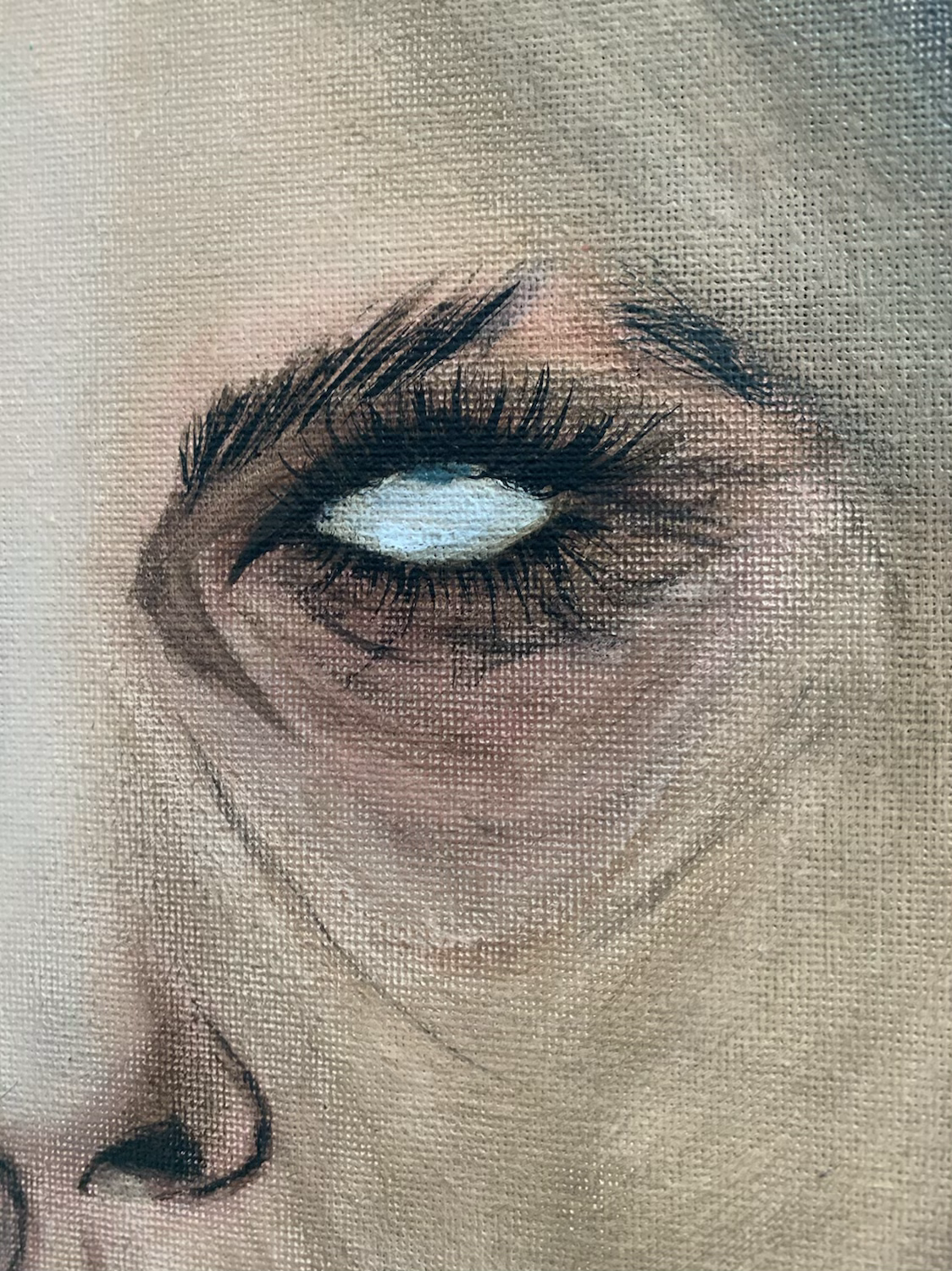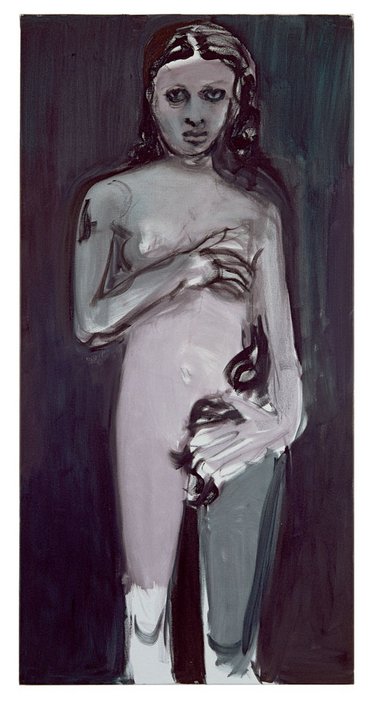Marlene Dumas
- Cristina Bratu

- May 20, 2019
- 4 min read
Dorothy D-Lite (1998)
Artwork description & Analysis: A nude woman stands, bent over double, her rear and genitals exposed as if in offering. She appears inviting of, and deriding of, the viewer simultaneously. It is nearly impossible to look away from this languid lady who invites us to confront our own social norms and sexual taboos, so prevalent in society.
The work is part of the MD-light series based on personal snapshots of prostitutes from the famous Red-Light district in Amsterdam. Dumas invited some of the ladies into her studio and took Polaroids for source material. In the series, we can find several other works of women in the same unexpected and insolent position but the work Dorothy D-Lite is one of the most appreciated. It is probably the artist's attention to the medium of watercolor that makes it so special. Indeed, the informal qualities of the body rendering make the work even more sensual and seductive. Art historian Emma Bedford notes, "luscious paint alternates with minimalist application and empty ground" and adds about the openly displayed anus, "the focus of so much desire and taboo, [is] deliciously - and humorously - accentuated with a stroke of gold." Through this touch of humor, Dumas seems to restore a kind of humanity and vulnerability to her subject.
The piece brings to mind the great painter Egon Schiele's erotic works, as like his women, the one here deliberately provokes her audience by unabashedly owning her profession within the artist's poignant gaze.
Ink wash, watercolor, and metallic acrylic on paper - De Pont Stichting, Tilburg
Here is an interview about nude paintings:
JH You’ve said that your pictures aren’t a mirror of reality, that they are the opposite – a way for you to explore something you don’t understand.
MD I don’t know if you actually do ‘understand’ more when you ‘see’ more. When I was looking at the porno ladies, I was specifically studying the positions they adopted to show everything at the same time. Sometimes it is incredible how they get it done. My work Dorothy D-lite 1998 is a good example of that. I also found them fascinating because I have never belonged to that group of women who look at their sexual parts. And I don’t know so well how I look anyway – I’m too stiff to bend like that!
JH Andrea, as well as being an artist, you’ve also done a PhD, the subject of which was the notion of shame.
AB Yes. I was interested to see in the exhibition that there are a lot of depictions of shy people who cover themselves. These are mainly women, such as Magdalena (Venus) 1995, where she is covering her breasts. Also, I love Confession 1993. To me, this speaks about you being full of secrets and not showing everything, and how it is actually impossible that paintings show everything.
MD Certain information is not in there. I’ve always been interested in what can be read into a work. It’s not that I want to stop all the interpretations, but I would say to people they must make a distinction between what is actually visible and what they think is there.
AB There’s a quote by the artist Elke Krystufek that I love very much: ‘Naked language can’t be spoken’. Represented nakedness is always covered in language, in modes of representation, it’s always painting. So you are interested in exposure or nakedness, but in the end art always fails to be naked.
MD I like that. I remember reading something that Okwui Enwezor quoted in his text Haptic Visions about Steve McQueen: ‘The visual is essentially pornographic.’ As if just by looking at things intensely you almost inevitably enter the realm of the pornographic. I understand his point, but I think that’s a bit too much. And I’m not Roman Catholic, but I always found it intriguing that the priest who listens cannot be seen, and may not talk about what he has heard later. I can relate that to other states of being, although it’s not directly my thing – I’ve never confessed in the confessional box, for example.
AB But it’s interesting how it relates to painting. This veil in front of the confessional box is the canvas. So the canvas also covers at the same time as it shows something.
MD I agree. For example, the painting Fingers from 1999 is always described by writers as if everything is depicted, but if you look at it closely, there are no genitals there. That little painting exposes nothing really. It is quite abstract. Very gestural. It is all about suggestion. It is not a realistically painted painting. It does not actually resemble its photographic source material at all.

AB I’m wondering if nakedness is also about an attitude, beyond questions of the iconography of the pornographic? There’s a nakedness in the eyes; in the vulnerability of people looking at you. Do you think you achieve the kind of nakedness you want to paint?
MD I don’t know actually. I agree that nakedness is also about an attitude, and I have said before that I don’t want the nude, I want the naked. But I do know with the descriptions of things, as with the Magdalena paintings, that I was deliberately not looking for seduction, but rather for confrontation, and for a long time that was also the case with my other depictions of figures. Maybe I thought that confrontation was closer to nakedness than seduction. But with my light works in the Iate 1990s, I did want to see if I could make them erotic. Snowwhite and the Broken Arm and Snowwhite in the Wrong Story, both from 1988, are not at all about eroticism, it’s more about the weight of the body. The spirit lifts you up, while the body pulls you down type of thing. But with good eroticism, just for a while at least, all of this becomes nonsense… Take the striptease project I did with Anton Corbijn. I don’t think I succeeded in portraying the essence of stripping. Striptease is a dying art, because it is all about movement and timing, and no one wants to take the time anymore. The girls, they just want to get it over and done with and almost don’t even do a tease. They get rid of their clothes much too quickly. It used to take so long to undress that when the last bit of clothing went, the stripper left the stage too. The tease is the tension. Revealing by slow motion. Strippers move. Paintings are still. All paintings are still lives.
I advise you to read the whole interview,it's really interesting.









Comments